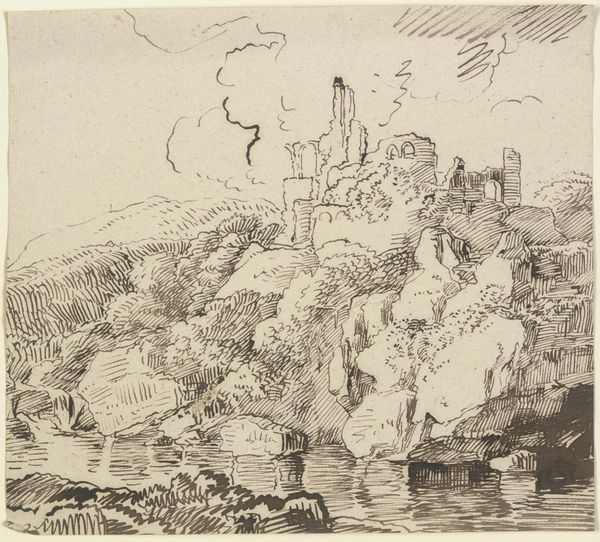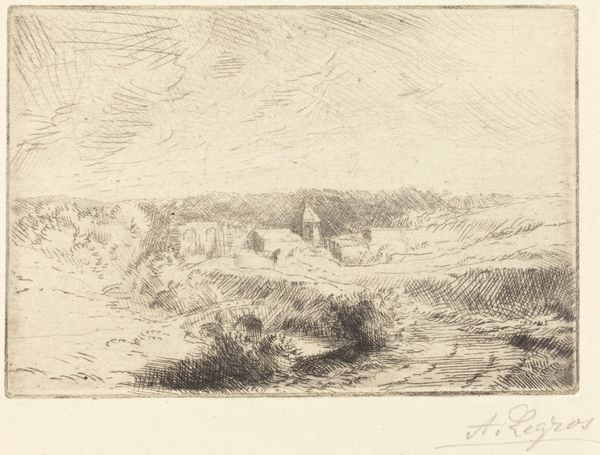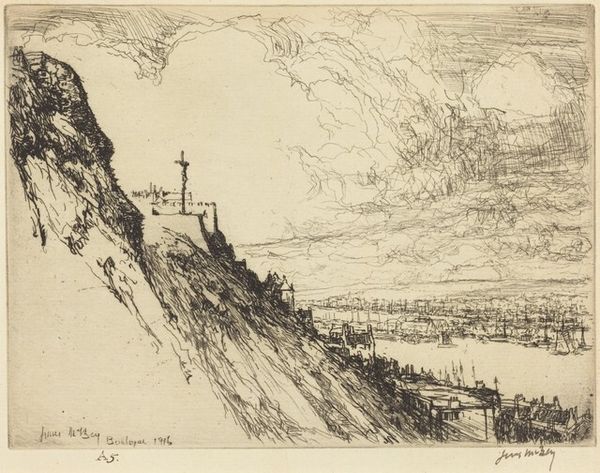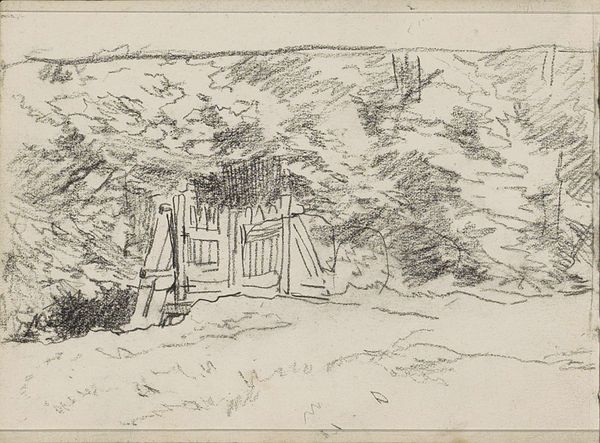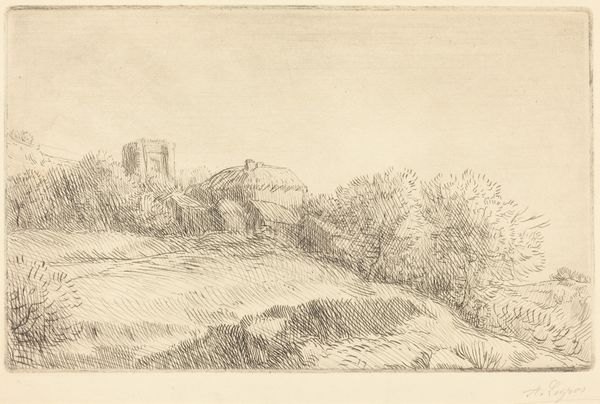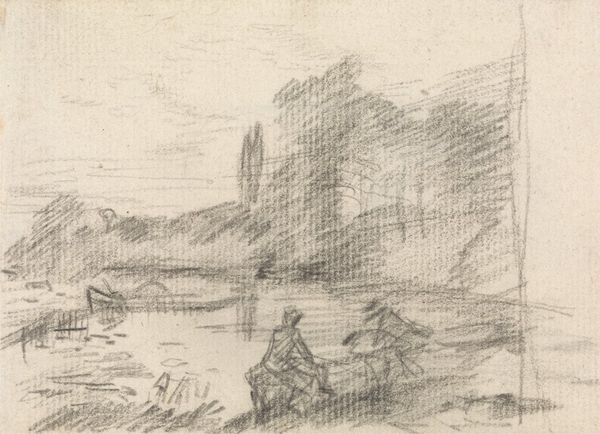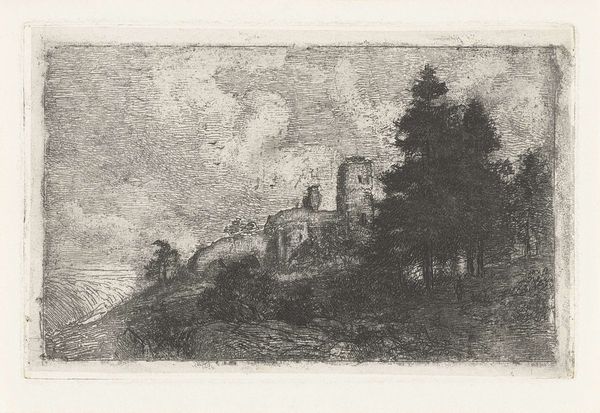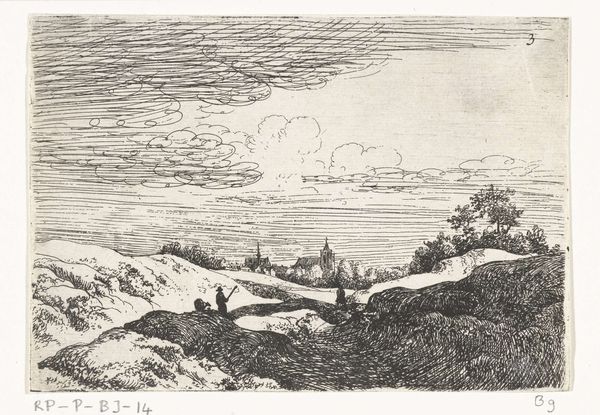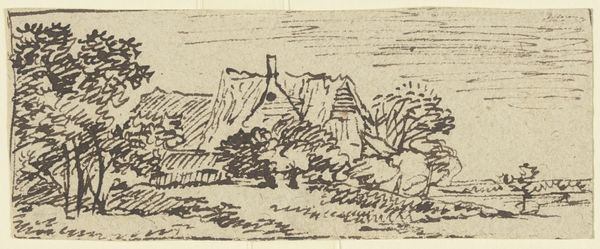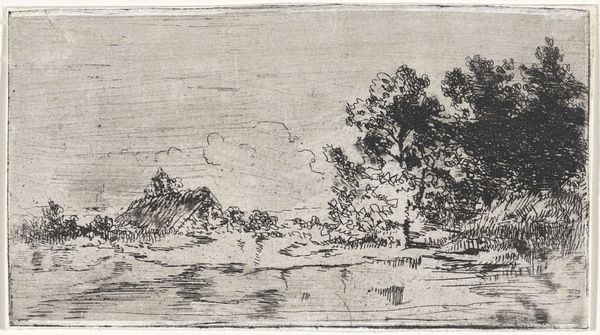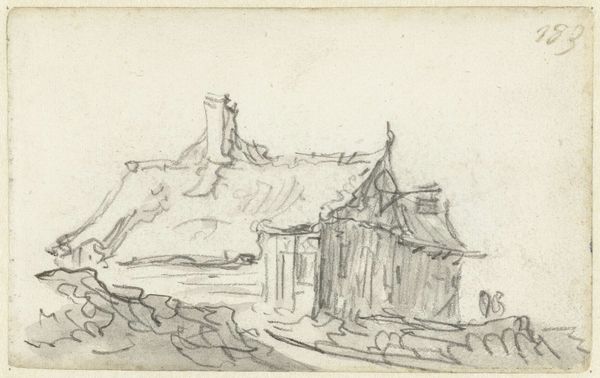
#
landscape illustration sketch
#
ink drawing
#
quirky sketch
#
pen sketch
#
personal sketchbook
#
ink drawing experimentation
#
pen-ink sketch
#
pen work
#
sketchbook drawing
#
sketchbook art
Dimensions: height 89 mm, width 118 mm
Copyright: Rijks Museum: Open Domain
Huib van Hove made this pen drawing of a landscape with a ruined tower sometime in the mid-19th century. It’s now held in the Rijksmuseum. The tower by the water becomes emblematic of a very particular cultural moment in the Netherlands, one that saw the rise of both national feeling and landscape painting. Why would a ruined tower appeal to an artist? Ruins were closely linked to ideas of the sublime and the picturesque, popular among artists and art lovers in this period. Ruins carried associations with the past, inviting viewers to contemplate the rise and fall of civilizations, and the transience of human achievement. Here, Van Hove presents us with a romantic scene, a scene of nature reclaiming the built environment. The tower has become a feature of the landscape, and prompts us to meditate on history and our place within it. Nineteenth-century artists, writers, and intellectuals drew on historical scholarship, folklore, and archeology, which are all avenues for understanding artworks like this one. They remind us that art is always part of a broader cultural and institutional context.
Comments
No comments
Be the first to comment and join the conversation on the ultimate creative platform.
